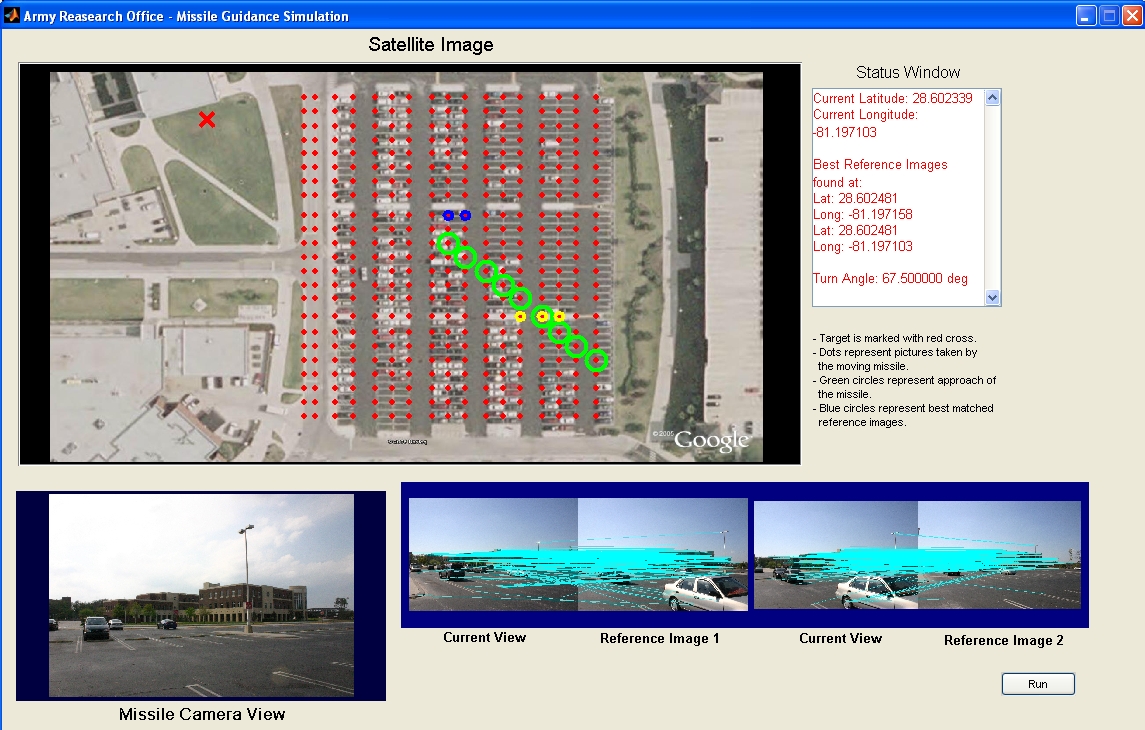| Missile Route Planning using Image based GPS Localization
|
|
| Collaborators: Fahd Rafi, Saad M. Khan | |
|
|
|
IntroductionCurrently, most cruise missiles use terrain reference navigation for aided INS (Inertial Navigation System). In this approach, the terrain information of a pre-determined area is digitized and is saved in a database. During the mission planning the targeteer defines a special trajectory for the missile to follow in order to hit the target. During the missile flight, the Radar Terrain Sensor (RTS) and Reference Altitude Sensor (RAS) on the missile can provide an accurate information for its current position and attitude. With the help of terrain contour matching algorithm, the differential correction is computed to control the flying missile. Upon reaching close to the target, the missile switches to a terminal guidance system to choose the point of impact. The point of impact is often pre-programmed by the GPS. In case of moving targets, a Digital Scene Matching Area Correlation module is used to find the target in the images obtained by the on-board camera. In this project, we explored the possibility of using image based approach to geo-locate the missile in the absence of GPS information. Such a situation often arises when the GPS signal is disabled through a deployment of GPS jammers. The proposed approach is based on the method developed for `Where am I - ICCV 2005' challenge contest. The approach requires a number of reference images (with known GPS locations), using which our approach will be able to locate the GPS of the current image transmitted by the on-board camera. |
|
Algorithmic StepsIn this section, for the sake of completion, we describe the algorithm for geo-locating the missile. For a detailed description of the algorithm, see the Related Links section at the bottom of the page. The steps are:
|
|
SimulationThe algorithm is tested in a simulation setting. A collection of images (1000) is used to construct the scenario. These images were taken at the UCF campus, and their distribution over the testing area is shown in the figure. Few of these images were marked as the reference images. The trajectory of the missile is simulated by selecting the start location and the target location (GPS). The missile is then steered through the testing area by computing the GPS at each time instant, and making the missile to move in the direction that minimizes the distance to the target. A sanpshot of the simulation software, developed in Matlab, is shown in the figure. | |
 Distribution of the complete collection of images over the testing site. |
|
|
|
|

|
|
Related Links
|


